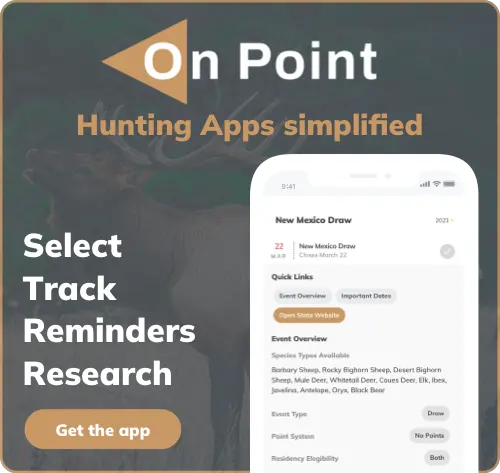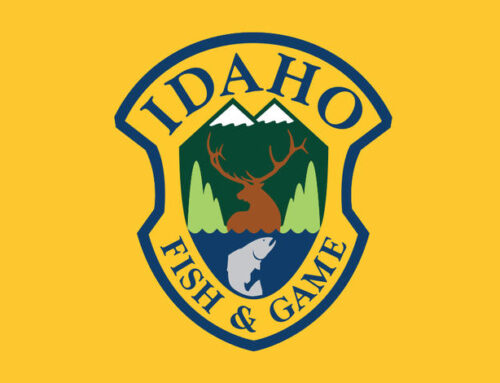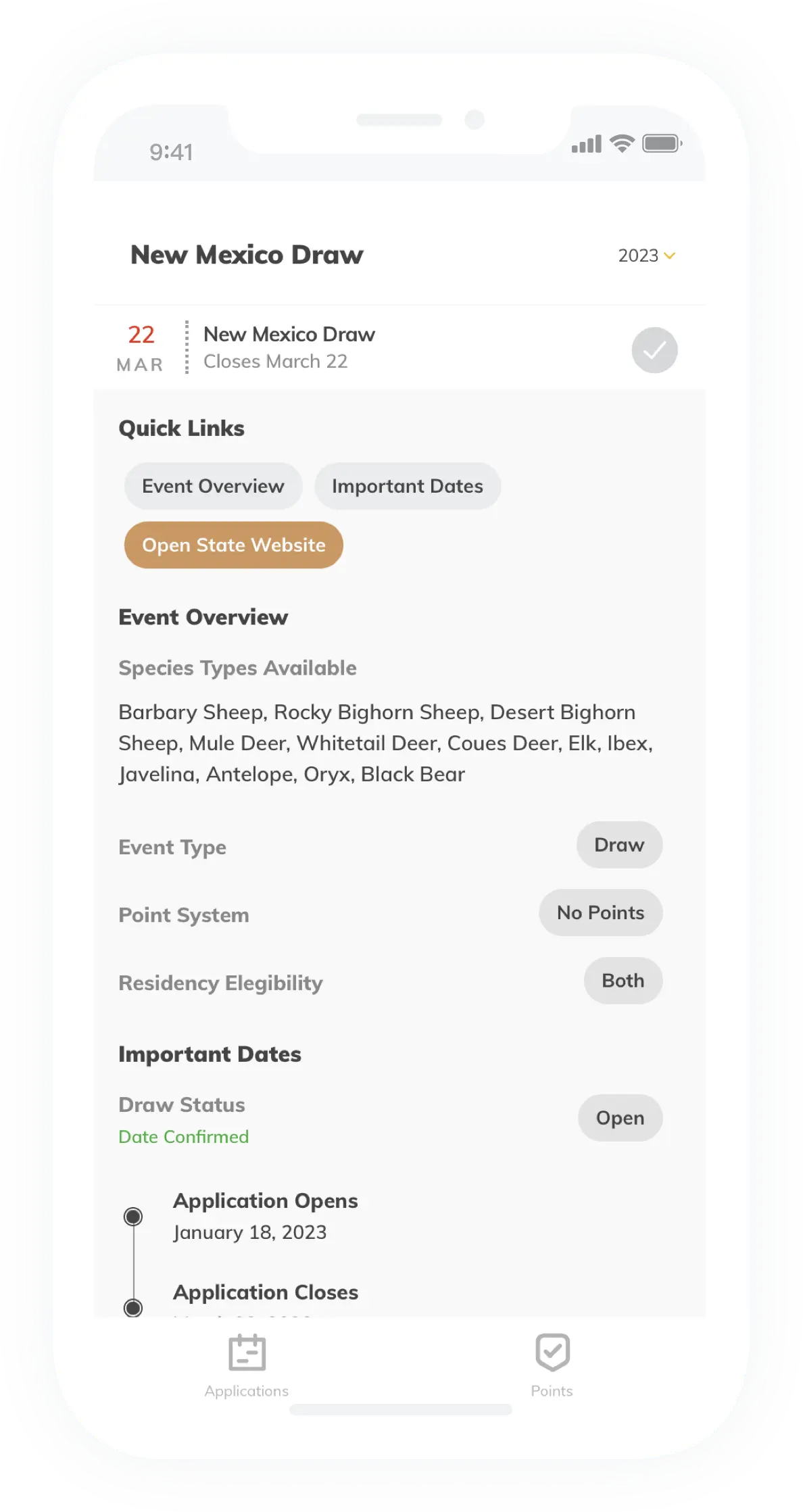Arizona Spring Draw 2025
The Arizona Spring Draw is used to allocate tags for all permit-only spring hunting opportunities in the state. It includes hunting opportunities for bison, black bear, turkey, javelina, and Raptor (falconry). In this article we’ll discuss the draw process, requirements and cost, and dates to help you prepare for the application. You can read about additional Arizona hunting opportunities in our overview article.
When is the Arizona Spring Hunts Draw?
The draw normally opens in early September and closes in early October. Dates for the 2024 Arizona Spring Hunts Draw are below, which are for the 2025 hunt season. You can add this draw and others to you OnPoint calendar to never miss an application.
| Event | Date |
|---|---|
| Online Application Opens | September 9th, 2024 |
| Deadline to Apply | October 1st, 2024, 11:59pm AZ Time |
What species are available in the Spring Hunts Draw?
- Black Bear (spring season)
- Bison (spring season)
- Turkey (spring season)
- Javelina (spring season)
- Falconry (annual)
What is required to apply for the Arizona Spring Draw?
Hunters must possess a valid hunting license in order to apply for the draw. The license must be valid on the the draw deadline date. Purchasing an annual license will allow applicants to apply for the other Arizona draws with little incremental cost.
What does it cost to apply in the draw?
The application cost varies depending on the quantity and type of species applied for. In addition to purchasing a hunting license, applicants must pay an application fee for each species applied for. This fee is the same cost as the bonus point fee for each species, and unsuccessful applicants will receive a bonus point for each species applied for. Successful applicants will be charged the full price of the tag. All fees are listed in the table below.
| Item | Resident Price | Non-Resident Price |
|---|---|---|
| Combo Hunt & Fish License | $57.00 | $160.00 |
| Application Fee (per species) | $13.00 | $15.00 |
| Bonus Point (per species) | $13.00 | $15.00 |
| Item | Resident Price | Non-Resident Price |
|---|---|---|
| Elk Tag | $135.00 | $650.00 |
| Deer Tag | $45.00 | $300.00 |
| Pronghorn Tag | $90.00 | $550.00 |
| Rocky Mountain Bighorn Sheep Tag | $300.00 | $1,800.00 |
| Desert Bighorn Sheep Tag | $300.00 | $1,800.00 |
| Turkey Tag | $25.00 | $90.00 |
| Bear Tag | $25.00 | $150.00 |
| Javelina Tag | $25.00 | $100.00 |
| Bison – Bull/Any Tag | $1,100.00 | $5,400.00 |
| Bison – Cow/Yearling Tag | $650.00 | $3,250.00 |
| Bison — Yearling only Tag | $350.00 | $1,750.00 |
| Raptor Tag | $13.00 | $190.00 |
| Sandhill Crane (3 tags) | $30.00 | $30.00 |
How does the draw process and points system work?
Arizona has a hybrid draw process and point system, although they refer to the system as a Bonus point system. The draw awards tags in three phases:
- Phase 1 (20% of tags, 1st & 2nd choice, preference style) – In this phase tags are awarded in order of points held, then decreasing in points quantity until the 20% cap is reached. A random number is generated and assigned to each application which serves to order applications within applicants with the same points quantity. Only 1st and 2nd choices are considered. This portion of the draw behaves like a preference point system.
- Phase 2 (1st and 2nd choice, bonus style) – In this phase, the system behaves as a bonus system. Applicants are assigned a number for their application, and receive one additional number for each point held. Their application is then assigned the lowest (best) number from their group. Tags are then allocated starting with the lowest number of all applicants. Only 1st and 2nd choices are considered at this stage. All remaining tags can be allocated at this stage if there are sufficient applications submitted.
- Phase 3 (3rd-5th choice, bonus style) – If any tags remain, they will be allocated at this stage. It behaves the same as phase 2 (bonus style).




